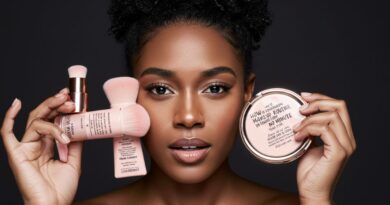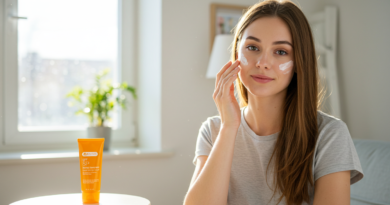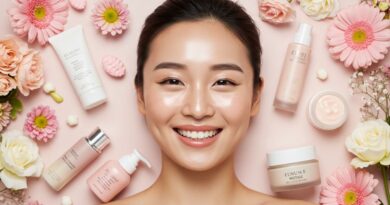Finding Your Signature Perfume: The Art and Magic of Scent
Think about it, you have been finding your signature perfume and you found one. A single whiff of a familiar scent can transport you back in time, evoke powerful emotions, and even shape how others perceive you. Perfume is more than just a pleasant aroma; it’s an invisible accessory, a personal statement, and a powerful tool for self-expression. It whispers stories without uttering a word, leaving a lingering trace of your presence long after you’ve left the room.
Consider me your personal fragrance guide, here to demystify the world of eaux de parfum, colognes, and everything in between. We’ll explore the fascinating language of scent, uncover the secrets to making your fragrance last, and ultimately, help you discover that one signature aroma that feels like an extension of your very soul. Prepare your senses for an enchanting exploration!

The Olfactory Pyramid: Understanding the Layers of Scent
Just like a musical composition, a perfume unfolds in layers, revealing different notes over time. Understanding this “olfactory pyramid” is key to appreciating the complexity and evolution of a fragrance:
- Top Notes (Head Notes): These are the initial, light notes you smell immediately after applying the perfume. They are often fresh, citrusy, or herbaceous and create the first impression. Think of them as the opening melody.
- Middle Notes (Heart Notes): These emerge as the top notes fade and form the core of the fragrance. They are usually more rounded and complex, often featuring floral, fruity, or spicy elements. This is the heart of the song.
- Base Notes (Dry Down): These are the rich, long-lasting notes that linger on the skin after the top and middle notes have dissipated. They provide depth and longevity to the fragrance, often featuring woody, musky, or vanilla accords. These are the lasting chords.
The Fragrance Families: Finding Your Olfactory Tribe

Perfumes are often categorized into fragrance families based on their dominant characteristics. Getting acquainted with these families can help you narrow down your preferences:
- Floral: The most popular family, featuring single floral notes (like rose, jasmine, or lily) or bouquets. Often associated with femininity and romance.
- Fruity: Sweet and vibrant, featuring notes like berries, apple, peach, or citrus. Often youthful and playful.
- Woody: Warm, earthy, and sophisticated, featuring notes like sandalwood, cedarwood, patchouli, and vetiver. Often perceived as grounding and elegant.
- Oriental (Amber): Rich, warm, and often spicy or balsamic, featuring notes like vanilla, amber, incense, and resins. Often considered sensual and luxurious.
- Fresh: Clean, crisp, and invigorating, featuring notes like citrus, aquatic, green, or herbaceous elements. Often associated with energy and vitality.
- Chypre: Characterized by a contrasting blend of citrus top notes, a heart of labdanum or oakmoss, and a woody-mossy base. Often complex and sophisticated.
- Fougere: Traditionally built on a lavender, coumarin, and oakmoss accord, often with herbaceous and woody facets. Often considered masculine or aromatic.
Pro Tip: Many perfumes are a blend of different fragrance families, creating unique and complex scent profiles.
The Art of Choosing: Finding “The One” (or Maybe a Few!)

Finding your signature scent is a personal journey, but here are some tips to guide you:
- Know Your Preferences: Think about the scents you naturally gravitate towards in your daily life. Do you love the smell of fresh-cut flowers, the warmth of vanilla, or the crispness of citrus?
- Sample, Sample, Sample: Never buy a perfume based solely on the scent strip or the first spritz. Spray it on your skin and allow it to develop through all the notes over several hours.
- Consider Your Skin Chemistry: Perfume interacts with your body’s natural oils, which can slightly alter the scent. What smells amazing on your friend might smell different on you.
- Think About Occasion and Season: You might prefer lighter, fresher scents for daytime and warmer months, and richer, more intense fragrances for evening or cooler weather.
- Trust Your Nose: Ultimately, the best perfume is the one you love and that makes you feel confident and happy. Don’t be swayed by trends or opinions if a scent doesn’t resonate with you.
Making Your Scent Last: Tips for Longevity

Want to make the magic last longer? Here are some tricks:
- Apply to Pulse Points: These warmer areas (wrists, neck, behind the ears, inside elbows) help to diffuse the fragrance.
- Don’t Rub: Rubbing your wrists together can break down the fragrance molecules and alter the scent. Instead, gently dab.
- Moisturize First: Applying perfume to moisturized skin helps it last longer. Use an unscented lotion or a lotion from the same fragrance line.
- Spray on Clothing (with Caution): Fabric can hold scent for a long time, but be mindful as some perfumes can stain delicate materials.
- Layer Your Scents: Using complementary products like shower gel, body lotion, or hair mist from the same fragrance line can enhance and prolong the scent.
- Storage Matters: Store your perfumes in a cool, dark place away from direct sunlight and extreme temperatures, which can degrade the fragrance.
Beyond “Feminine” and “Masculine”: The Rise of Unisex Scents
The traditional gender boundaries in fragrance are becoming increasingly blurred, with many captivating unisex scents gaining popularity. These fragrances often focus on notes that appeal to a wider range of preferences, celebrating individuality over outdated stereotypes. Don’t be afraid to explore scents marketed to any gender – your perfect match might surprise you!
The Language of Scent: Common Perfume Terms Explained

- Eau de Parfum (EdP): Contains a higher concentration of fragrance oils (typically 15-20%), resulting in a longer-lasting scent.
- Eau de Toilette (EdT): Contains a lower concentration of fragrance oils (typically 5-15%), offering a lighter and often more affordable option.
- Eau de Cologne (EdC): Has the lowest concentration of fragrance oils (typically 2-4%), resulting in a light and refreshing scent that fades relatively quickly.
- Parfum (Extrait de Parfum): The most concentrated and luxurious form of fragrance (often 20-30% or more), known for its richness and longevity.
- Notes: The individual scent components that make up a fragrance.
- Accord: A harmonious blend of several notes that create a distinct scent characteristic.
- Sillage: The trail or aura that a perfume leaves behind.
- Longevity: How long a perfume lasts on the skin.
Your Scent Story: What Will Yours Be?
Choosing a perfume is like choosing a story you want to tell the world. It’s an intimate expression of your personality and a sensory experience that can uplift, empower, and enchant. Take your time, explore with curiosity, and trust your instincts. The perfect scent is waiting to be discovered, ready to become an unforgettable part of your unique story.
Explore more beauty posts here



